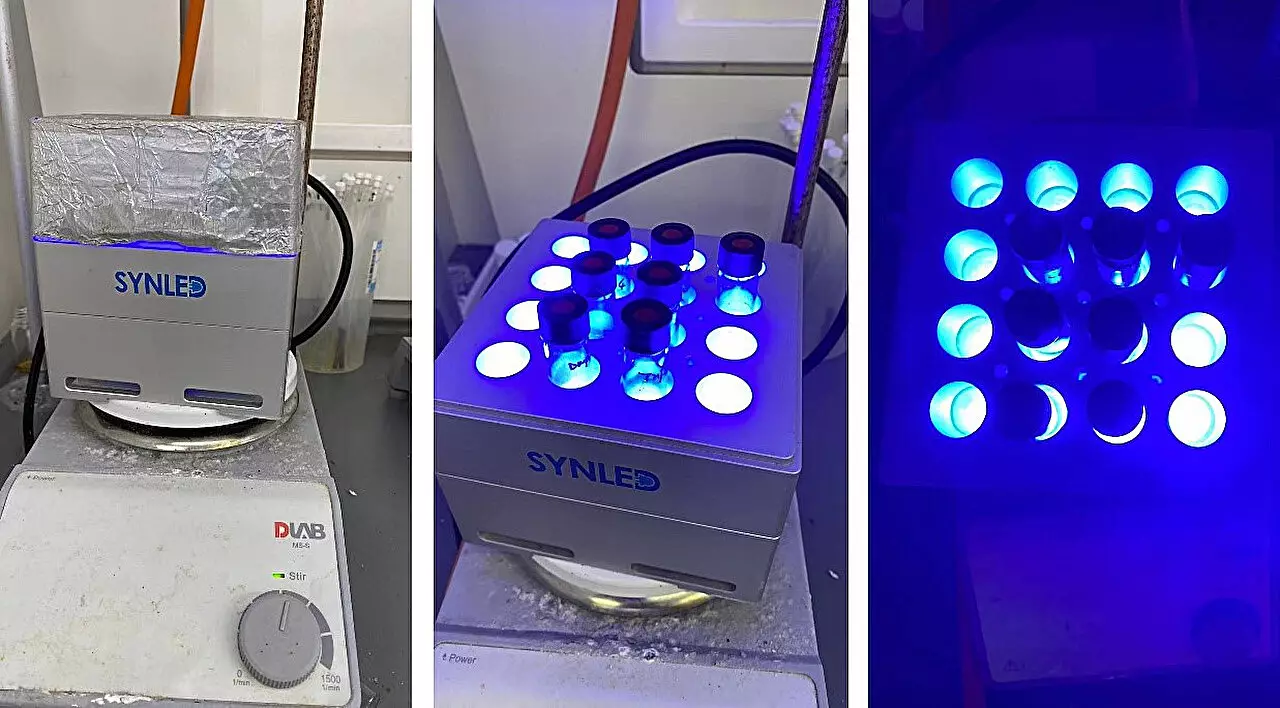Recent advancements in biomimetic chemistry, spearheaded by researchers from the National University of Singapore (NUS), mark a monumental shift in our approach to synthesizing essential biological compounds. This innovative research enables the transformation of naturally occurring sugars into various stable glycosides and glycoproteins without the cumbersome need for protecting-group strategies—a hallmark that has long limited the efficiency and practicality of carbohydrate synthesis. Helmed by Associate Professor Koh Ming Joo in collaboration with Professor Benjamin G. Davis from the University of Oxford, this groundbreaking work is not just another scientific finding; it’s a laser-focused effort to streamline and elevate the fields of pharmaceutical, cosmetic, and biotechnology applications.
The significance of carbohydrates in biological processes cannot be overstated. These molecules serve as energy sources, structural components, and recognition elements in cellular interactions. However, the conventional methods for synthesizing carbohydrate derivatives have been hampered by their complexity and wastefulness. The traditional reliance on multiple protective-group strategies has hindered researchers from achieving the desired specificity and efficiency. This recent innovation not only simplifies the process but also aligns it more closely with nature’s own methods of synthesis.
The Challenges of Traditional Carbohydrate Synthesis
Historically, the production of C-glycosyl compounds, which have gained importance for their stability and enhanced biological activity, has been a cumbersome task. The chemical landscape of native sugars—characterized by multiple reactive hydroxyl groups—creates a formidable challenge for selective functionalization. The need for protecting groups has not only rendered the processes inefficient but has also been ecologically detrimental due to the excessive waste generated during synthesis.
Associate Professor Koh’s statement encapsulates the frustration that many researchers have felt in their quest for a straightforward glycosylation technique: “Many research groups… have endeavored tirelessly to conceive a protecting-group-free chemical glycosylation approach.” This acknowledgment underscores the scientific community’s relentless pursuit of greater efficiency and reduced environmental impact, a pursuit that this new research ambitiously addresses.
Nature-Inspired Solutions: The Cap and Glycosylate Approach
What sets this study apart is its ingenious “cap and glycosylate” strategy, inspired by the natural enzymatic processes of glycosyltransferases. These enzymes adeptly facilitate site-selective glycosylations at the anomeric carbon without altering other reactive sites—a feat that traditional chemistry has struggled to replicate. By invoking a biomimetic approach, researchers have crafted a method that first activates the anomeric hydroxyl of a native sugar and then substitutes it with a nucleophilic thiol. This intermediate thioglycoside undergoes a photoinduced desulfurative cross-coupling—a breakthrough that redefines how we conceptualize glycosylation.
The implications of this research extend far beyond simple glycoside production. The successful synthesis of C-glycosyl, S-glycosyl, Se-glycosyl, and O-glycosyl compounds illustrates the versatility of this approach. Additionally, the method was successfully employed to modify proteins, showcasing its potential for significant advancements in post-translational modifications. This dual capability underscores the transformative potential of the cap and glycosylate methodology, particularly for industries reliant on high biocompatibility and functional diversity.
Applications and Future Potential
The ramifications of this biomimetic technology are profound. As researchers increasingly explore the incorporation of sugars into biological molecules, the efficient synthesis of these glycosides and glycoproteins could well lead to breakthroughs in developing sugar-based therapeutics. By efficiently harnessing the often-overlooked capabilities of native sugars, this new methodology stands to facilitate rapid advancements in drug development, skincare, and a vast array of biotechnology applications.
Professor Davis poignantly notes, “…carbon-centered radicals are wonderfully useful yet benign reactive intermediates for achieving new chemistries in biological systems.” His team’s work in generating free glycosyl radicals serves as a testament to a broader movement toward simplifying complex biological processes, echoing the rhythms of nature in laboratory settings.
In a world increasingly defined by the need for sustainability and efficiency, the “cap and glycosylate” technology heralds a paradigm shift in how we synthesize and utilize carbohydrates. It presents a clearer path toward modernizing carbohydrate synthesis by eliminating the messy, wasteful practices of the past. As researchers explore this innovative technology, the landscape of glycochemistry is poised for transformative changes that could redefine not just academic research, but practical applications in healthcare, cosmetics, and beyond.

